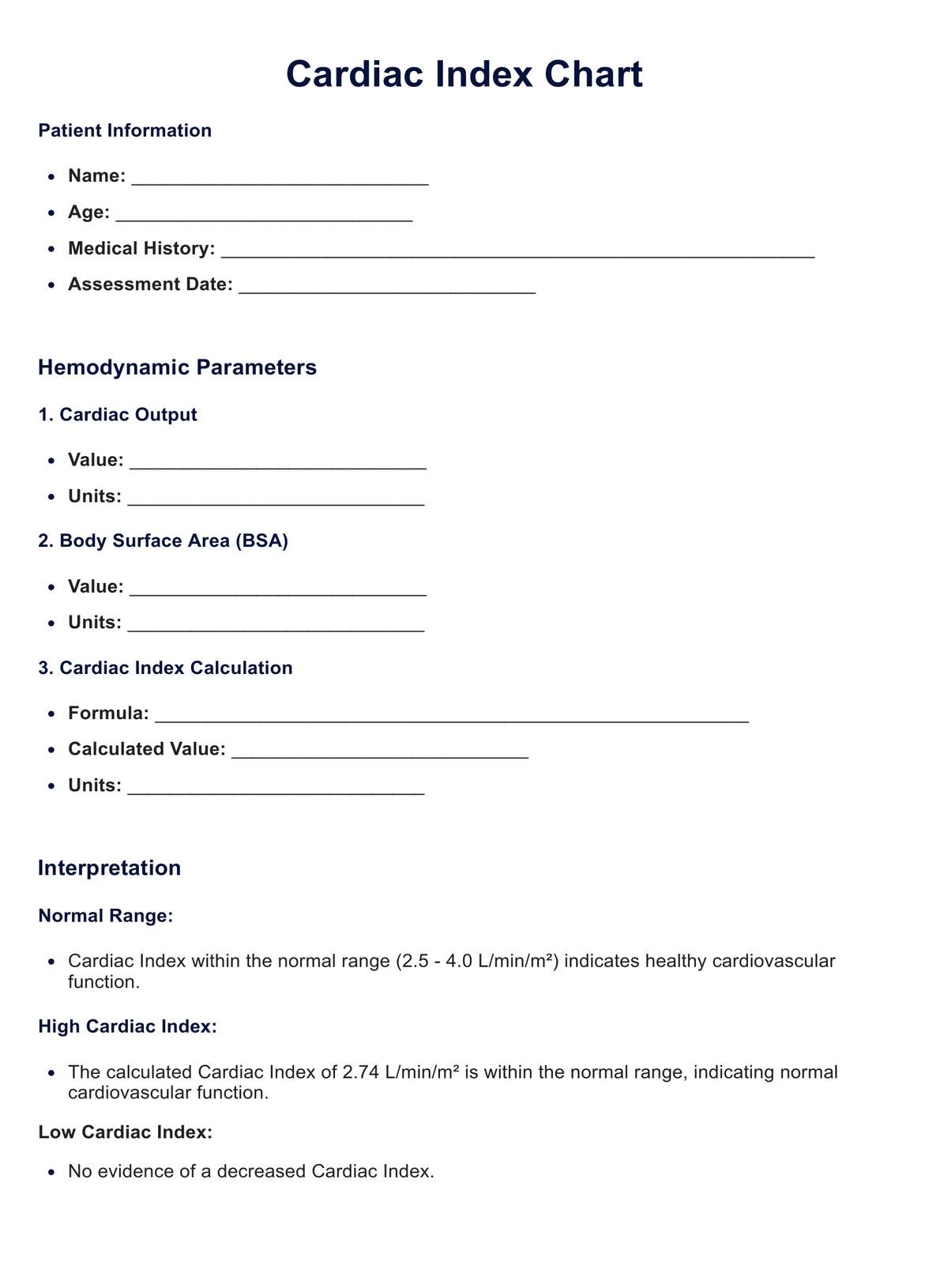Healthcare professionals, including cardiologists, cardiovascular specialists, anesthesiologists, and critical care practitioners, typically request Cardiac Index Charts.

Track and interpret key cardiac metrics with our Cardiac Index Chart. Download now for precise cardiovascular assessments.
Healthcare professionals, including cardiologists, cardiovascular specialists, anesthesiologists, and critical care practitioners, typically request Cardiac Index Charts.
Cardiac Index Charts are used in various clinical scenarios, such as routine cardiovascular monitoring, critical care settings, surgical planning, post-operative care, and chronic disease management.
Healthcare practitioners use Cardiac Index Charts to assess and normalize cardiac output data, providing insights into cardiovascular performance. The charts aid in informed decision-making, especially in adjusting treatment plans or interventions.
EHR and practice management software
*No credit card required
Free
$0/usd
Unlimited clients
Telehealth
1GB of storage
Client portal text
Automated billing and online payments